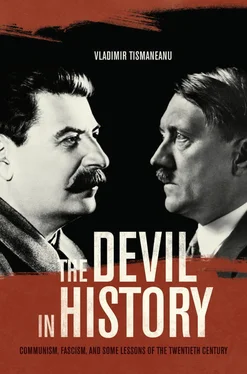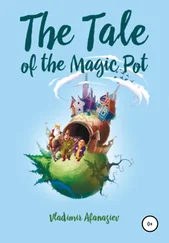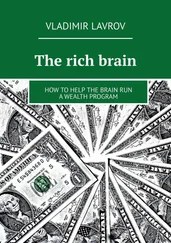There was no spectacular revelation in The Black Book: after all, whatever has emerged from the secret archives of the former Soviet bloc countries is just a confirmation of the long-held view that Communists everywhere engaged in revolutionary civil war to accomplish the total transformation of man, economy, society, and culture. What was original was the comprehensive and systematic analysis and interpretation of the crimes and repressions associated with Leninist practices in the twentieth century. I commend the nuanced analyses of differences between stages and countries: Poland and Hungary, especially after Stalin’s death, were not exactly totalitarian. After all, the Hungarian revolution was initiated by a group of anti-Stalinist reform Communists. There should have been deeper analysis of the Leninist experience in East Germany, including a discussion of currently available data concerning the infamous Stasi universe of fear and intimidation. As a whole, however, the fundamental merit of the Black Book of Communism , which set the tone for future discussion, was its endeavor to restore the public memory of Communism’s crimes and to oppose revisionist efforts aimed at excusing the Communist vision, if not the practices. The volume showed that, as Michael Scammell excellently pointed out, “what matters is that we understand the entirety of this century’s terrible history…. As a civilization we are obliged to come to terms with that truth [Communism’s criminality], and admit our share of culpability, and draw correct conclusions.” 64
The authors of the Black Book succeeded in assembling enough information to construct a big picture that maybe for the first time made an undeniable case that the scale of the crimes against humanity committed by Communist regimes do matter. Despite arguments to the contrary, Communism should not and cannot be studied just like other important events in world history. 65What is unfortunate, and some of Courtois’ controversial introductory statements can be explained on this basis, is that it took too long to learn that “in the sorry story of our century, Communism and Nazism are, and always were, morally indistinguishable.” Indeed, as Tony Judt states, this rather belatedly consensual epiphany “justifies a complete recasting and rewriting of the history of our times.” 66
The book came out in France in 1997 and generated tremendous polemics, especially in such publications as Le Monde, Le Débat , and Commentaire. It was published at a time when the French intelligentsia had passionately discussed the mystifying appeals of Communism, as explored by the late François Furet in his masterful Le passé d’une illusion. Statements that were considered acceptable coming from Furet, one of the most respected and highly influential French historians, sounded outrageous to many former leftist intellectuals when presented in a very provocative formulation by the editor of the Black Book , Stéphane Courtois, in his introduction. Initially, the introduction was to be written by Furet himself, but when he passed away, Courtois, the editor of the journal Communisme , wrote a text that managed to irritate many French historians, political scientists, and journalists. 67Within a political and academic culture in which the radical Left had long exerted an inordinate influence (one may even use the term hegemony) , Courtois’ blunt and not always very balanced statements regarding the inherent (and, for him, morally mandatory) comparability of Communism and Fascism were perceived as politically charged, a mere simulation of a thoroughgoing historical approach. Furthermore, scholars like Annette Wieworka accused Courtois of an attempt to use this comparison to make Communism look worse than Nazism (at least in terms of the number of victims). 68Two contributors, Nicolas Werth and Jean-Louis Margolin, decided to dissociate themselves publicly from the main theses of the introduction.
The main problems with Courtois’ introduction were a fixation on figures and a failure to highlight not only similarities but also significant distinctions between Communist and Nazi systems of mass terror and extermination. Courtois opened the door to a practice that continues to haunt discussions about the criminality of Communism, especially in the former Soviet bloc: “an international competition for martyrdom” (in the words of Timothy Snyder). Courtois and others who amplified his model of analysis seemed to believe that “more killing would bring more meaning.” Indeed, one of the central risks incumbent in the comparison between Fascism and Communism is that it can unleash, if its stakes are gaining the upper hand in a competition over round numbers of victims, what Snyder called “martyrological imperialism.” And indeed, as “millions of ghosts of people who never lived” 69are released in various countries’ cultures, the memory of radical evil offers no meaning except for rationalizations in the service of national politics and discourses of historical entitlement.
In comparing the number of victims under Communist regimes (between 85 and 100 million) to the number of people who perished under or because of Nazism (25 million), Courtois downplayed a few crucial facts. In this respect, some of his critics were not wrong. First, as an expansionist global phenomenon, Communism lasted between 1917 and the completion of The Black Book (think of North Korea, China, Cuba, and Vietnam, where it is still alive, if not well). National Socialism lasted from 1933 to 1945. Second, we simply do not know what price Nazism would have taken in victims had Hitler won the war. The logical hypothesis (supported by evidence such as the differences between how the Nazis implemented the day-to-day occupation of Poland and how they occupied Holland) is that not only Jews and Gypsies but also millions of Slavs and other “racially unfit” individuals would have died. According to Ian Kershaw, “The General Plan for the east commissioned by Himmler envisaged the deportation over the subsequent years of 32 million persons, mainly Slavs, beyond the Urals and into Western Siberia.” 70And, as the plan for resettling Jews has shown, such designs were themselves genocidal. Christopher Browning and Lewis Siegelbaum excellently summarized, for Nazi Germany, the core post-1941 identitarian mutation that created the potential for cumulative, irradiating racial exterminism: “The Nazi assertion of German identity as the ‘master race’ meant the destruction of both the freedom and the identity of those whom they ruled. Victory and empire completed the transition of the Volksgemeinschaft from the restoration illusion of a unified community of the German people to the Nazi vision of a racial community waging eternal struggle—a Kampfgemeinschaft.” 71As for the political opponents of Hitler’s reign of terror, suffice it to remember Dachau, Buchenwald, and Sachsenhausen.
Third, in the case of Communism one can identify an inner dynamic that contrasted the original promises to the sordidly criminal practices. In other words, there was a search for reforms, and even for socialism with a human face, within the Communist world, but such a thing would have been unthinkable under Nazism. The chasm between theory and practice, or at least between the moral-humanist Marxian (or socialist) creed, and the Leninist or Stalinist (or Maoist, or Khmer Rouge) experiments was more than an intellectual fantasy. Furthermore, whereas Sovietism and Nazism were equally scornful of traditional morality and legality in their drive to eliminate enemies, one needs to remember that for Lenin and his followers “re-education,” cruel and humiliating as it was, could offer at least some chance for survival for either the class enemy or their offspring. Diaries, letters, transcripts of inquiry commissions, and other public and private transcripts have shown the extent to which “speaking Bolshevik” (Kotkin) or becoming “ordinary Stalinists” (Figes) could become a mechanism on social (re)integration. In the words of an author who has extensively dealt with this issue:
Читать дальше












